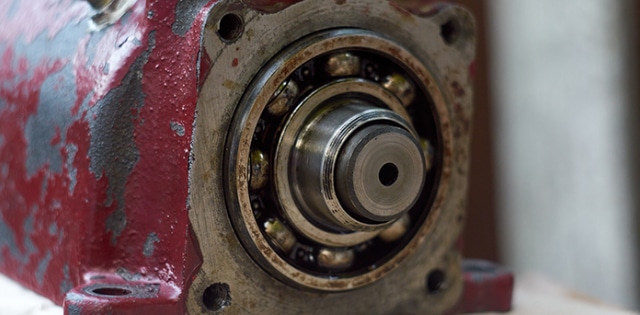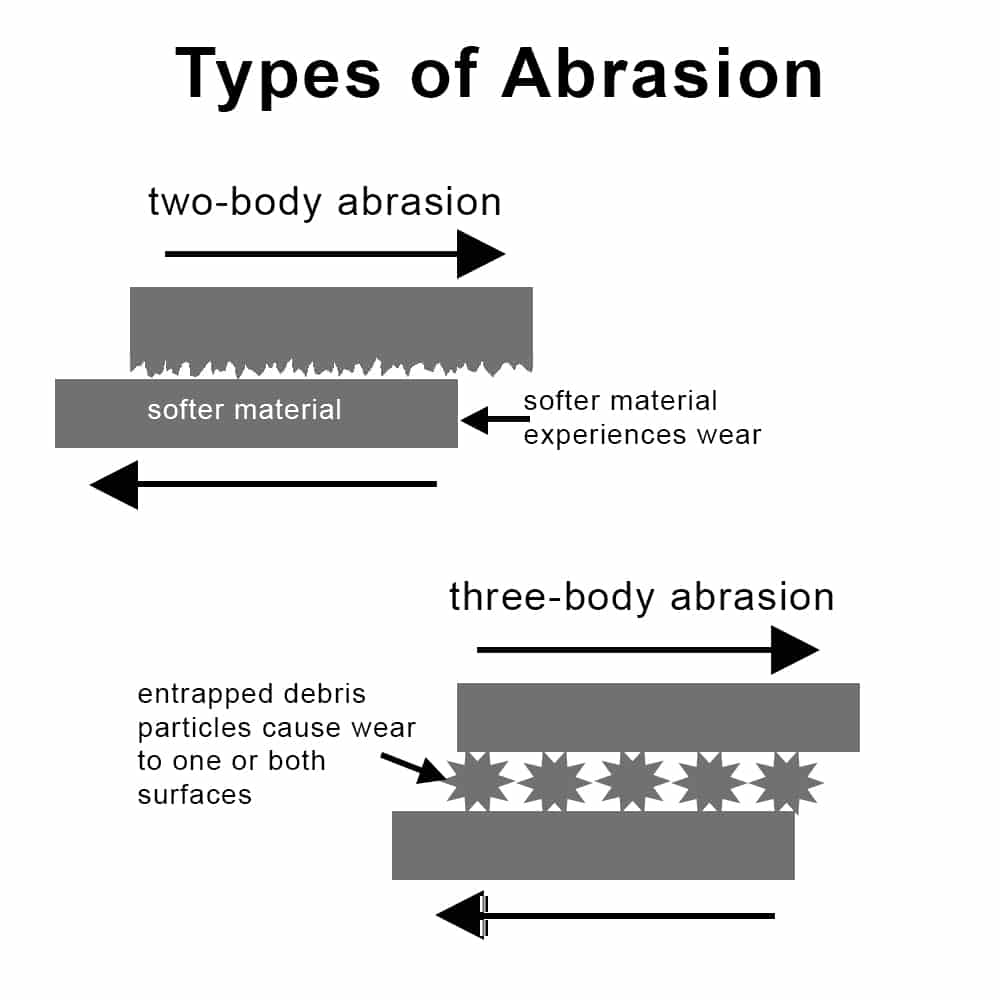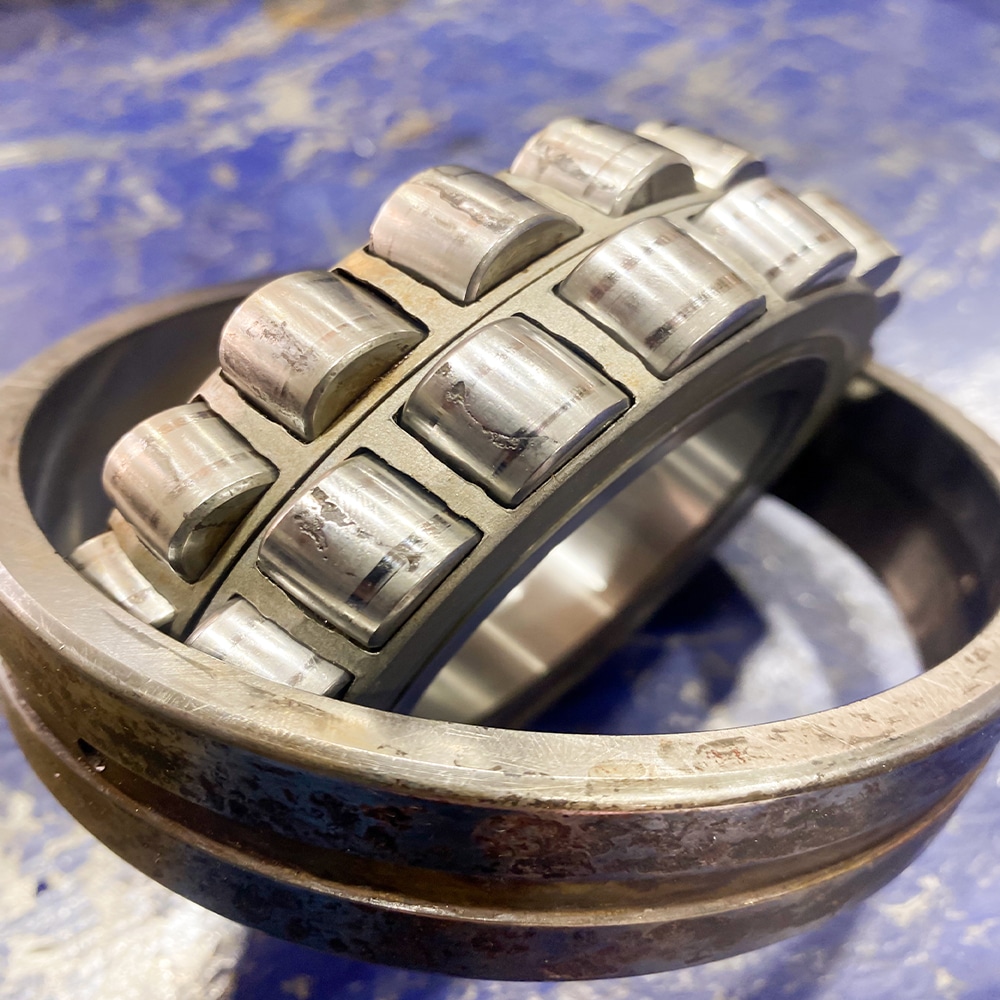
In our series on fighting metal failures, we provided an overview of corrosion, the natural degradation of metal over time due to chemical or environmental exposure, and its costly implications for a variety of industries.
We’re now going to focus on another destructive metal failure: abrasion. For our purposes, we define abrasion as the gradual wearing away of a metal surface due to mechanical forces that occur when two surfaces rub against one another. This continuous “collision” leads to the formation of grooves, scratches, scuffing, and other defects that compromise the metal’s integrity.
Furthermore, abrasion can occur alone or in conjunction with corrosion. Industries that rely on repetitive mechanical processes—aerospace, automotive, oil and gas, and plastic injection molding, to name a few—often utilize machinery, tools, and components that are particularly susceptible to abrasion. In this post, we’ll highlight the different types of abrasive wear, discuss where it occurs across industries, and explain how abrasion testing and mitigation can help safeguard capital investments.
Types of Abrasion
Anywhere that two materials move against one another with sufficient energy and repetition, abrasion can occur. This rubbing may be by design or because some buffering material between the two surfaces has been lost, enabling them to touch. When analyzing abrasion, and available prevention and mitigation strategies, engineers will typically characterize the metal failure as “two-body” or “three-body” abrasive wear.
Two-body abrasive wear vs. three-body abrasive wear
Two-body abrasion, also known as sliding abrasion, occurs when two metal surfaces move across each other. The harder of the two metals acts as an abrasive agent against the softer metal, which experiences the wear.
Unlike two-body abrasion, where the abrasive particles bond to the harder of the two metals, three-body abrasion occurs when debris particles become entrapped between the two metal surfaces. As the two metals slide, these particles “roll” in between them, removing material from one or both of the metal surfaces.

Effects of abrasive metal failure across industries
Two-body and three-body abrasion occurs across myriad applications and industries. In all cases, abrasive wear leads to declining performance and increasing maintenance costs. Here is an overview of components and systems where abrasion can occur.
- Aerospace: Engines, flight controls, fuel systems, fuselage, and wings.
- Automotive: Brakes and clutch, engine, suspension, and transmission components; exhaust systems.
- Food Processing and packaging: Choppers, conveyors, filling and labeling machines, grinders, mixers, and storage and transport containers.
- Oil and gas: Crushers, drills, excavators, and rigs.
- Manufacturing and machinery: Bearings, compressors, gears, and pumps.
- Medical: Surgical devices and instruments.
- Nuclear: Generators and turbines.
- Plastic injection molding: Automation systems, barrels, conveyor systems, molds, nozzles, and screws.

Abrasive wear on a metal bearing.
Abrasive wear testing, analysis, and mitigation
To combat abrasion risk, manufacturers turn to high-strength materials and thin dense chrome coatings. With chromium coatings, in particular, the key to reduced abrasion is high hardness.
The Armoloy Innovation Center in Dekalb, IL, has a staff metallurgist on site, and we provide metallurgical science services including abrasion testing and wear analysis. Below are some of the specifications and standards used to measure and analyze abrasive wear.
Jaw crusher gouging abrasion test
Found in the mining, quarrying, and construction industries, jaw rock crushers use force to break rock and other materials, making them susceptible to abrasive metal failure. Use this test to measure the resistance of minerals and other materials to gouging abrasion. It involves a single-pass operation in a jaw crusher with a hardened jaw surface to generate abrasion and determines if the material can resist surface deformation and cracking from repeated impact loads. The goal is to make design recommendations to reduce jaw plate abrasion and wear and improve the efficiency of the crusher, ultimately reducing the risk of equipment failure.
ASTM G81 is a standardized version of the jaw crusher gouging abrasion test.
Pin-on-disc abrasion test
Aerospace, automotive, medical, and other industries use the pin-on-disc test to evaluate the wear resistance of different materials or to optimize a design for a specific application. In this test, A pin, which is made of a harder material, is pressed against a disc made from the material of interest. A load is applied to the pin and the disc rotates, which creates a wear scar in it. The depth and volume of the scar are measured and used to determine the wear rate.
ASTM G99 is a standardized test method for wear testing with a pin-on-disk apparatus.
Taber testing
This test method evaluates the abrasion resistance of coatings. In this test, a sample of the material is mounted on a rotating platform and subjected to a standardized abrasive action using a rubber wheel with embedded abrasive. The test measures the amount of material loss due to the abrasive action.
ASTM D4060 is a standardized test method for determining the resistance of organic coatings to abrasion produced by the Taber Abraser. The test method is performed on coatings applied to plane, rigid surfaces, like metal panels.
Fight metal failure. Future-proof your designs.
While you can apply advanced metal coatings to existing tools and equipment at any point in their lifecycle, incorporating thin dense chrome from the very beginning design stage maximizes their protective power and the effectiveness of the items. Engineered for superior performance, Armoloy® coatings have undergone abrasion testing and received acceptance for use in USDA-regulated environments.
To learn more about combating abrasion, explore Analyzing Metal Failure: Abrasive Damage.